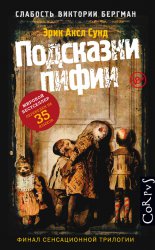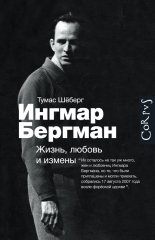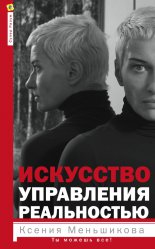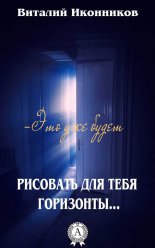Иисус и его мир. Новейшие открытия Эванс Крейг

6 О семейной усыпальнице Анны см. Leen and Kathleen Ritmeyer, “Akeldama: Potter’s Field or High Priest’s Tomb?” BAR 20/6 (1994), pp. 22–35, 76, 78.
7 О надписях на оссуарии Каиафы см. Ronny Reich, “Ossuary Inscriptions from the Caiaphas Tomb”, Jerusalem Perspective 4/4-5 (1991), pp. 13–21 + тарелки и рисунки; «Ossuary Inscriptions from the “Caiaphas” Tomb», ‘Atiqot 21 (1992), pp. 72–77 + figs 5 and 6.
8 О еврейских оссуариях и вере в греческого бога Харона см. Rachel Hachlili and Ann Killebrew, “Was the Coin-on-Eye Custom a Jewish Burial Practice in the Second Temple Period?” BA 46 (1983), pp. 147–153, особенно с. 148–149; Zvi Greenhut, «The “Caiaphas” Tomb in North Talpiyot, Jerusalem», ‘Atiqot 21 (1992), pp. 63–71, особенно с. 70. О связи данного обычая с представлениями о загробной жизни см. David Bivin, “A Sadducee Who Believed in an Afterlife?” Jerusalem Perspective 4/4-5 (1991), p. 7.
9 Об изображении суден в гробницах см. Benjamin Mazar, Beth She‘arim: Report on the Excavations During 1936–1940, vol. 1, Catacombs 1–4 (New Brunswick, NJ: Rutgers University Press, 1973), pl. XX (= Beth She‘arim, Hall P, catacomb no. 1); см. также Erwin R. Goodenough, Jewish Symbols in the Greco-Roman Period, vol. 1, The Archaeological Evidence from Palestine (Bollingen Series 37; New York: Pantheon Books, 1953), pp. 97–98 (сравни Goodenough, Jewish Symbols in the Greco-Roman Period, vol. 3, nos 67 and 77), где приводятся примеры палестинских погребений; и Goodenough, Jewish Symbols in the Greco-Roman Period, vol. 2, p. 43 (сравни. Goodenough, Jewish Symbols in the Greco-Roman Period, vol. 3, no. 836), где содержатся примеры погребений в Риме.
10 Подробнее о суднах для умерших см. Saul Liberman, “Some Aspects of After Life in Early Rabbinic Literature”, in S. Lieberman et al. (eds), Harry Austryn Wolfson: Jubilee Volume on the Occasion of His Seventy-Fifth Birthday, vol. 2 (Jerusalem: American Academy for Jewish Research, 1965), pp. 495–532, особенно с. 512–513.
11 Mazar, Beth She‘arim, p. 129.
12 Мнения библеистов, твердо убежденных в том, что это гробница Каиафы, см. John Dominic Crossan and Jonathan L. Reed, Excavating Jesus: Beneath the Stones, Behind the Texts (San Francisco: HarperCollins, 2001), p. 242. Мнения археологов, которые разделяют эту точку зрения, см. Zvi Greenhut, “The Caiaphas Tomb in North Talpiyot, Jerusalem”, and Ronny Reich, “Ossuary Inscriptions of the Caiaphas Family from Jerusalem”, in H. Geva (ed.), Ancient Jerusalem Revealed (Jerusalem: Israel Exploration Society, 1994), соответственно, с. 219–222 и 223–225.
13 Мнения библеистов, сомневающихся в том, что это гробница Каиафы, см. Emile Puech, “A-t-on redecouvert le tombeau du grand-pretre Caiphe?” MdB 80 (1993), pp. 42–47; William Horbury, «The “Caiaphas” Ossuaries and Joseph Caiaphas», PEQ 126 (1994), pp. 32–48.
14 О спорах относительно вида гробницы Каиафы см. Puech, “A-t-on redecouvert le tombeau du grand-pretre Caiphe?”, pp. 45–46; Gibson, The Final Days of Jesus, p. 83.
15 О том, какое имя написано на оссуарии Каиафы, см. Horbury, «The “Caiaphas” Ossuaries», с. 41: «менее правдоподобно», что это буква йод, а не вав; с. 46: «спорная гласная – это вероятнее вав. а не йод»; Puech, “A-t-on redecouvert le tombeau du grand-pretre Caiphe?”, p. 46, который предлагает читать имя как Qopha или Qupha.
16 О надписи на оссуарии Феофила см. Dan Barag and David Flus-ser, “The Ossuary of Yehohanah Granddaughter of the High Priest Theophilus”, IEJ 36 (1986), pp. 39–44; Levi Yizhaq Rahmani, A Catalogue of Jewish Ossuaries in the Collections of the State of Israel (Jerusalem: The Israel Antiquities Authority, 1994), p. 259 no. 871.
17 О надписи на оссуарии Боэта см. Eleazar Lipa Sukenik “A Jewish Tomb Cave on the Slope of Mount Scopus”, Qovetz 3 (1934), pp. 62–73 (Hebrew), here 67; Rahmani, A Catalogue of Jewish Ossuaries, pp. 85–86 no. 41.
18 О сборе податей с евреев в Палестине I века см. K. C. Hanson and Douglas E. Oakman, Palestine in the Time of Jesus: Social Structures and Social Conflicts (Minneapolis: Fortress, 1998), pp. 99-129; Douglas E. Oakman, Jesus and the Peasants (Matrix: The Bible in Mediterranean Context 4; Eugene, OR: Cascade Books, 2007), pp. 280–297.
19 О находках Лагранжа, связанных с корваном, см. Marie-Joseph Lagrange, “Epigraphie semitique”, RB 2 (1893), pp. 220–222.
20 О надписи «корван», обнаруженной около Храмовой горы, см. Benjamin Mazar, “The Excavations South and West of the Temple Mount in Jerusalem: The Herodian Period”, BA 33 (1970), pp. 4760, с. 55 + рис. 13.
21 О данной надписи см. Jozef Tadeusz Milik, “Trois tombeaux juifs recemment decouverts au Sud-Est de Jerusalem”, LA 7 (1956–1957), pp. 232–267, о ней: с. 235–239 + рис. 2 т. 3; Joseph A. Fitzmyer, “The Aramaic Qorban Inscription from Jebel Hallet et-Turi and Mk 7:11 /Mt 15:5”, JBL 78 (1959), pp. 60–65.
22 Об открытии и анализе содержимого так называемой Гробницы плащаницы см. Mark Spigelman, “The Jerusalem Shroud: A Second Temple Burial Answers Modern Medical Questions”, Bulletin of the Anglo-Israel Archaeological Society 24 (2006), p. 127; Gibson, The Final Days of Jesus, pp. 138–147.
23 О медицинском исследовании костных останков из Гробницы Каиафы см. Joe Zias, «Human Skeletal Remains from the “Caiaphas” Tomb», Atiqot 21 (1992), pp. 78–80.
24 О Гробнице Ясона см. Levi Yizhaq Rahmani, “Jason’s Tomb”, IEJ 17 (1967), pp. 61-100.
25 Свежий обзор свидетельств о продолжительности жизни евреев в эпоху поздней античности см. Yossi Nagar and Hagit Torgee, “Biological Characteristics of Jewish Burial in the Hellenistic and Early Roman Periods”, IEJ 53 (2003), pp. 164–171.
1 Вводные материалы относительно иудейского обычая ossilegium см. Eric M. Meyers, Jewish Ossuaries: Reburial and Rebirth (BibOr 24; Rome: Pontifical Biblical Institute, 1971); Craig A. Evans, Jesus and the Ossuaries: What Jewish Burial Practices Reveal about the Beginning of Christianity (Waco, TX: Baylor University Press, 2003); Byron R. McCane, Roll Back the Stone: Death and Burial in the World of Jesus (Harrisburg, PA: Trinity Press International, 2003).
2 Подробное рассмотрение кумранских текстов о распятии см. Gregory L. Doudna, 4QPesher Nahum: A Critical Edition (JSPSup 35; CIS 8; London and New York: Sheffield Academic Press, 2001), pp. 389–433; Yigael Yadin, The Temple Scroll (3 vols, Jerusalem: Israel Exploration Society, 1977–1983), pp. 2:288–291.
3 Ряд исследований, посвященных данной находке, см. Yigael Yadin, “Epigraphy and Crucifixion”, IEJ 23 (1973), pp. 18–22 + plate; Joe Zias and Eliezer Sekeles, “The Crucified Man from Giv‘at ha-Mivtar: A Reappraisal”, IEJ 35 (1985), pp. 22–27; Joe Zias and James H. Charlesworth, “Crucifixion: Archaeology, Jesus, and the Dead Sea Scrolls”, in James H. Charlesworth (ed.), Jesus and the Dead Sea Scrolls (ABRL; New York: Doubleday, 1992), pp. 273–289 + plates. По вопросу о том, была ли кость повреждена до смерти или после, см. Norman J. Sauer, “The Timing of Injuries and Manner of Death: Distinguishing among Antemortem, Perimortem and
Postmortem Trauma”, in Kathleen J. Reichs (ed.), Forensic Osteology: Advances in the Identification of Human Remains (2nd edn, Springfield, IL: Charles C. Thomas, 1998), pp. 321–332.
4 Относительно останков обезглавленной женщины (или мужчины) см. N. Haas, “Anthropological Observations on the Skeletal Remains from Giv‘at ha-Mivtar”, IEJ 20 (1970), pp. 38–59; Joe Zias, “Anthropological Evidence of Interpersonal Violence in First-Century A. D.Jerusalem”, Current Anthropology 24 (1983), pp. 233–234; Patricia Smith, “The Human Skeletal Remains from the Abba Cave”, IEJ 27 (1977), pp. 121–124.
5 Мнение том, что это акт насилия, а не казнь, см. Zias, “Anthropological Evidence of Interpersonal Violence”, pp. 123–124.
6 Относительно костных останков в Таутоне см. V. Fiorato, A. Boyl-ston and C. Knusel (eds), Blood Red Roses: The Archaeology of a Mass Grave from the Battle of Towton AD 1461 (Oxford: Oxbow, 2000).
7 Мнение, согласно которому недостаток свидетельств о погребении казненных позволяет предположить, что Иисус не был погребен, см. John Dominic Crossan, Who Killed Jesus? Exposing the Roots of Anti-Semitism in the Gospel Story of the Death of Jesus (San Francisco: HarperCollins, 1995), pp. 160–188.
8 О погребении у римлян см. Jocelyn M. C. Toynbee, Death and Burial in the Roman World (Ithaca, NY: Cornell University Press, 1971).
9 О монументальных гробницах см. Janos Fedak, Monumental Tombs of the Hellenistic Age: A Study of Selected Tombs from the pre-Classical to the Early Imperial Era (Toronto: University of Toronto Press, 1990); Geoffrey B.Waywell and Andrea Berlin, “Monumental Tombs: From Maussollos to the Maccabees”, BAR 33/3 (2007), pp. 54–65.
10 Об исторической достоверности повествования о погребении Иисуса см. Raymond E. Brown, “The Burial of Jesus (Mark 15:4247)”, CBQ 50 (1988), pp. 233–245.
11 Об элементе позора в погребении Иисуса см. Byron R. McCane, «“Where No One Had Yet Been Laid”: The Shame of Jesus’ Burial», in Bruce D. Chilton and Craig A. Evans (eds), Authenticating the Activities of Jesus (NTTS 28.2; Leiden: Brill, 1998), pp. 431–452; reprinted in McCane, Roll Back the Stone, pp. 89-108.
12 О том, что Евангелия не противоречат данным археологии, см. Jodi Magness, “Jesus’ Tomb – What Did It Look Like?”, in Hershel Shanks (ed.), Where Christianity Was Born (Washington, DC: Biblical Archaeology Society, 2008), pp. 213–226; цитата со с. 224. Критика гипотезы Кроссана, согласно которой Иисус не был погребен см. McCane, Roll Back the Stone, p. 107, n. 6; Magness, “Jesus’ Tomb”, pp. 222–224.
1 Ученые публикации, касающиеся раскопок гробницы в Восточном Тальпиоте, см. Yosef Gat, “East Talpiot”, Hadashot Arkheologiyot [= Archaeological News] 76 (1981), pp. 24–25 (Hebrew); Amos Kloner, “A Tomb with Inscribed Ossuaries in East Talpiyot, Jerusalem”, Atiqot 29 (1996), pp. 15–22 (with sketches by Shimon Gibson).
2 Относительно теории о том, что в гробнице в Восточном Тальпиоте хранились останки Иисуса и его семьи, см. Simcha Jacobovici and Charles Pellegrino, The Jesus Family Tomb: The Discovery, the Investigation, and the Evidence that Could Change History (San Francisco: HarperCollins, 2007). Выход данной книги совпал с показом по телеканалу Discovery Channel и другим кабельным каналам документального фильма на ту же тему. Ни один из авторов книги не относится ни к археологам, ни к историкам, ни к библеистам.
3 Объяснение значения отметки каменщика на оссуарии «Иисуса» см. Levi Yizhaq Rahmani, A Catalogue of Jewish Ossuaries in the Collections of the State of Israel (Jerusalem: The Israel Antiquities Authority, 1994), p. 223, n. 704. На с. 226–229 можно найти три других примера оссуариев (no. 725, 729 и 731) из Восточного Тальпиота и один пример – из Рамота (no. 740) со значками в форме Х. Если внимательно прочесть каталог Рахмани, там можно найти и другие примеры оссуариев со значками каменотесов. Якобовичи и Пеллегрино ссылаются на данный каталог. См. The Jesus Family Tomb, p. 215. Для того, как неверно они толкуют этот знак, трудно найти извинение.
4 О том, что остроконечный фронтон с кругом представляет собой христианский символ, см. Jacobovici and Pellegrino, The Jesus Family Tomb, pp. 11–12, 128–130. Якобовичи и Пеллегрино называют остроконечный фронтон «шевроном» и «тайным иудео-христианским символом». В этом нет ни крупицы истины.
5 Относительно остроконечного фронтона с кругом или розеткой на иудейских памятниках древности см. Erwin R. Goodenough, Jewish Symbols in the Greco-Roman Period, vol. 3 (Bollingen Series 37; New York: Pantheon Books, 1953), рис. 142 и 143, 239 (оссуарии), 508 (фасад гробницы); 676 (монета Филиппа, тетрарха Гавланитиды); 707 и 710 (надгробные украшения: ковчег для Торы с остроконечной крышей и кругом); комментарий к рис. 710 см. Goodenough, Jewish Symbols, vol. 2: «Должен сделать вывод, что круг внутри остроконечного фронтона при больших масштабах стал бы венком или розеткой» (с. 6). См. также Michael Avi-Yonah, Art in Ancient Palestine: Selected Studies (Jerusalem: Magnes Press, 1981), plates 12.4, 13.8, 15.4–5 and 16.1.
6 Хасмонеи были аристократической священнической семьей, члены которой в 167 году до н. э. возглавили восстание иудеев против Селевкидов. Их имена получили широкое распространение среди иудеев. Все без исключения имена, написанные на оссуариях из гробницы в Восточном Тальпиоте, носят хасмонейский характер. Этот факт наряду с наличием остроконечного фронтона с кругом над входом в гробницу позволяет предположить, что погребенные здесь люди были связаны с Иерусалимским храмом и, возможно, принадлежали к священнической аристократии.
7 Решительная критика книги Jacobovici and Pellegrino, The Jesus Family Tomb см. Shimon Gibson, The Final Days of Jesus: The Archaeological Evidence (New York: HarperOne, 2009), pp. 175187: «их выводы о гробнице совершенно не заслуживают доверия»; Jonathan Reed, Review of Biblical Literature (опубликовано в Интернете в июне 2007). Рид, квалифицированный и достойный уважения археолог, справедливо утверждает, что книга Якобовичи и Пеллегрино содержит «обман». Он дает еще более суровую оценку их книге в телевизионном документальном фильме.
1 Реконструкция лица Иисуса – дело рук Ричарда Нива, специалиста по восстановлению внешнего облика человека, из Университета Манчестера, ушедшего на пенсию. См. Popular Mechanics (7 December 2002).
2 О погребальных портретах см. Susan Walker and Morris Bierbrier (eds), Ancient Faces: Mummy Portraits from Roman Egypt (London: British Museum Press, 1997; 2nd edn, New York: Routledge, 2000); Jan Picton, Stephen Quirke and Paul C. Roberts (eds), Living Images: Egyptian Funerary Portraits in the Petrie Museum (Walnut Creek, CA: Left Coast Press, 2007); Alan K. and Michael Brady (eds), Images and Artefacts of the Ancient World (Oxford and New York: Oxford University Press, 2005), pp. 131–150.
3 Что мы можем сказать о лике Иисуса, отпечатанном на Туринской плащанице, или о его изображениях на византийских монетах VI и VII веков н. э.? Тот факт, что между образом Иисуса на плащанице и на этих монетах есть много общего, заслуживает внимания. Однако ученые ставят под сомнение аутентичность плащаницы, а монеты были отчеканены достаточно поздно. Вряд ли имеет смысл реконструировать облик Иисуса на основе этих изображений.
4 Об одежде и тканях, найденных в Нахаль-Хевере, см. Y.Yadin, Bar-Kokhba: The Rediscovery of the Legendary Hero of the Last Jewish Revolt against Imperial Rome (London: Weidenfeld & Nicolson, 1971), pp. 66–85; Jodi Magness, Debating Qumran: Collected Essays on its Archaeology (Interdisciplinary Studies in Ancient Culture and Religion 4; Leuven: Peeters, 2004), pp. 113–149, esp. 137–140. Magness сопоставляет находки Ядина с теми остатками тканей, обуви и одежд, которые были найдены в Кумране. Об одежде римлян (где иногда проводится сравнение с находками Ядина) см. также Judith L. Sebesta, “Tunica Ralla, Tunica Spissa: The Colors and Textiles of Roman Costume”, и Lucille A. Roussin, “Costume in Roman Palestine: Archaeological Remains and the Evidence from the Mishnah”, in Judith L. Sebesta and Larissa Bonfante (eds), The World of Roman Costume (Madison: University of Wisconsin Press, 2001), pp. 65–76, 182–190, соответственно. Roussin сопоставляет археологические данные с многочисленными замечаниями об одежде в раввинистической литературе. Она делает некоторые любопытные выводы о том, как одежда отражала социальный статус и религиозные традиции. В том же сборнике статей см. также Douglas R. Edwards, “The Social, Religious, and Political Aspects of Costume in Josephus”, pp. 153–162.
5 Об иудейских сандалиях и других изделиях из кожи см. Ann E. Killebrew, “Leather Goods”, in Lawrence H.Schiffman and James C.VanderKam (eds), Encyclopedia of the Dead Sea Scrolls (2 vols, Oxford: Oxford University Press, 2000), pp. 1:477–479.
6 О римской обуви см. Alan K. Bowman and J. David Thomas, The Vindolanda Writing Tablets (Newcastle-upon-Tyne: Frank Graham, 1974), p. 27 (pl. XIII). Соответствующие технические подробности см. C. van Driel-Murray, “Vindolanda and the Dating of Roman Footwear”, Britannia 32 (2001), pp. 185–197. Общая дискуссия см. N. Goldman, “Roman Footwear”, in Sebesta and Bonfante (eds), The World of Roman Costume, pp. 101–132.
1 Apol. Justin Martyr, First Apology
1 Clem. 1 Clement
AASOR Annual of the American Schools of Oriental Research
ABD Anchor Bible Dictionary
’Abot Mishnah: ’Abot
ABRL Anchor Bible Reference Library
Ag. Ap. Josephus, Against Apion
Ant. Josephus, Jewish Antiquities
Apol. Plato, Apology of Socrates
b. Ketub. Babylonian Talmud: Ketubbot
b. Meg. Babylonian Talmud: Megillah
b. Mo’ed Qat. Babylonian Talmud: Mo’ed Qatan
b. Pesah. Babylonian Talmud: Pesahim
b. Qidd. Babylonian Talmud: Qiddushin
b. abb. Babylonian Talmud: Shabbat
BA Biblical Archaeologist
BAR Biblical Archaeology Review
Bib Biblica
BibOr Biblica et orientalia
BibSem Biblical Seminar
CBQ Catholic Biblical Quarterly
CD Cairo Genizah copy of the Damascus Document
CIJ Corpus inscriptionum judaicarum
CIL Corpus inscriptionum latinarum
CIS Corpus inscriptionum semiticarum
CJO Catalogue of Jewish Ossuaries (ed. L. Y. Rahmani)
CJZ Corpus Jьdischer Zeugnisse aus der Cyrenaika (ed. G. Lьderitz)
CRINT Compendia rerum iudaicarum ad Novum Testamentum
Dial. Justin Martyr, Dialogue with Trypho
Dreams Philo, On Dreams
DSD Dead Sea Discoveries
Embassy Philo, On the Embassy to Gaius
Esth. Rab. Esther Rabbah
Exod. Rab. Exodus Rabbah
Haer. Irenaeus, Against Heresies
Hist. eccl. Eusebius, Ecclesiastical History
IEJ Israel Exploration Journal
IG Inscriptiones graecae. Editio minor. Berlin, 1924–
Ign. Eph. Ignatius, To the Ephesians
Ign. Smyrn. Ignatius, To the Smyrnaeans
Joseph Philo, On the Life of Joseph
JBL Journal of Biblical Literature
JJS Journal of Jewish Studies
JQR Jewish Quarterly Review
JR Journal of Religion
JRASup Journal of Roman Archaeology: Supplement series
JSHJ Journal for the Study of the Historical Jesus
JSJSup Journal for the Study of Judaism in the Persian,
Hellenistic, and Roman Periods: Supplement Series
JSOT Journal for the Study of the Old Testament
JSPSup Journal for the Study of the Pseudepigrapha:
Supplement Series
J. W. Josephus, Jewish Wars
LД Lexikon der Дgyptologie
Lev. Rab. Leviticus Rabbah
Life Josephus, The Life
m. Keritot Mishnah: Keritot
m. Ma‘a. . Mishnah: Ma‘aser Sheni
m. Meg. Mishnah: Megillah
m. Mo‘ed Qat. Mishnah: Mo‘ed Qatan
m. Ned. Mishnah: Nedarim
m. Nega’im Mishnah: Nega’im
m. Parah Mishnah: Parah
m. Pesah. Mishnah: Pesahim
m. abb. Mishnah: Shabbat
m. Sanh. Mishnah: Sanhedrin
m. Ta‘anit Mishnah: Ta‘anit
m. Yoma Mishnah: Yoma
Mas Masada ostraca
MdB Le Monde de la Bible
Moses Philo, On the Life of Moses
Nat. Pliny the Elder, Natural History
NEAEHL The New Encyclopedia of Archaeological Excavations in the Holy Land (ed. E. Stern)
NovT Novum Testamentum
NovTSup Novum Testamentum Supplements
NTS New Testament Studies
NTTS New Testament Tools and Studies
OGIS Orientis graeci inscriptiones selectae (ed. by W. Dittenberger)
PEQ Palestine Exploration Quarterly
P. Oxy. Papyri Oxyrhynchus
Ps.-Diogenes A writing falsely attributed to Diogenes the ynic
Qoh. Rab. Qohelet Rabbah
RAr Revue Archйologique
RB Revue biblique
REJ Revue des йtudes juives
SBLRBS Society of Biblical Literature Resources for Biblical Study
SBLSBS Society of Biblical Literature Sources for Biblical Study
SEG Supplementum epigraphicum graecum
Sipre Deut. Sipre Deuteronomy
Sipre Num. Sipre Numbers
SNTSMS Society for New Testament Studies Monograph Series
Song Rab. Song of Songs Rabbah
Spec. Laws Philo, On the Special Laws
t. Me‘ila Tosefta: Me‘ila
t. Menah. Tosefta: Menahot
T. Mos. Testament of Moses
t. Qidd. Tosefta: Qiddushin
t. abb. Tosefta: Shabbat
t. Sukkah Tosefta: Sukkah
Tg. Ps.-J. Targum Pseudo-Jonathan
TSAJ Texte und Studien zum antiken Judentum
WUNT Wissenschaftliche Untersuchungen zum Neuen Testament
y. Ketub. Jerusalem Talmud: Ketubbot
y. Meg. Jerusalem Talmud: Megillah
y. Mo‘ed Qat. Jerusalem Talmud: Mo‘ed Qatan
ZNW Zeitschrift fr die neutestamentliche Wissenschaft und die Kunde der lteren Kirche
Для дальнейшего чтения
К счастью, в наши дни появляется все больше и больше трудов, посвященных археологии. Тем, кто хотел бы углубиться в вопрос об археологических находках, связанных с Иисусом, я могу порекомендовать следующие публикации:
Aviam, M., Jews, Pagans and Christians in Galilee: 25 Years of Archaeological Excavations and Surveys. Hellenistic to Byzantine Periods (Land of Galilee 1; Rochester, NY: University of Rochester Press, 2004).
Bagatti, B., Excavations in Nazareth: Vol 1, From the Beginning till the XII Century (2 vols, Publications of the Studium Bibli-cum Franciscanum 17; Jerusalem: Franciscan Printing Press, 1969).
Bottini, G. C., Di Segni, L. and Alliata, E. (eds), Christian Archaeology in the Holy Land, New Discoveries: Essays in Honour of Virgilio C. Corbo, OFM (Studium Biblicum Franciscanum: Collectio Maior 36; Jerusalem: Franciscan Printing Press, 1990).
Charlesworth, J. H. (ed.), Jesus and Archaeology (Grand Rapids, MI: Eerdmans, 2006).
Charlesworth, J. H. and Weaver, W. P. (eds), What Has Archaeology To Do with Faith? (Faith and Scholarship Colloquies; Philadelphia, PA: Trinity Press International, 1992).
Crossan, J. D. and Reed, J. L., Excavating Jesus: Beneath the Stones, Behind the Texts (San Francisco, CA: HarperCollins, 2001).
Edwards, D. R. and McCollough, C. T. (eds), Archaeology and the Galilee: Texts and Contexts in the Graeco-Roman and Byzantine Periods (South Florida Studies in the History of Judaism 143; Atlanta, GA: Scholars Press, 1997).
Edwards, D. R. and McCollough, C. T. (eds), The Archaeology of Difference: Gender, Ethnicity, Class and the “Other’ in Antiquity: Studies in Honor of Eric M.Meyers (AASOR 60/61; Boston, MA: American Schools of Oriental Research, 2007).
Evans, C. A., Jesus and the Ossuaries: What Jewish Burial Practices Reveal about the Beginning of Christianity (Waco, TX: Baylor University Press, 2003).
Fant, C. and Reddish, M. G., Lost Treasures of the Bible: Understanding the Bible through Archaeological Artifacts in World Museums (Grand Rapids, MI: Eerdmans, 2008).
Gibson, S., The Final Days of Jesus: The Archaeological Evidence (New York: HarperOne, 2009).
Meyers, E. M. (ed.), Galilee through the Centuries: Confluence of Cultures (Duke Judaic Studies 1; Winona Lake, IN: Eisenbrauns, 1999).
Meyers, E. M. and Strange, J. F., Archaeology, the Rabbis and Early Christianity (London: SCM Press, 1981).
Murphy-O’Connor, J., The Holy Land: An Oxford Archaeological Guide from Earliest Times to 1700 (5th edn, Oxford and New York: Oxford University Press, 2008).
Pixner, B., Paths of the Messiah and Sites of the Early Church from Galilee to Jerusalem: Jesus and Jewish Christianity in Light of Archaeological Discoveries (ed. R. Riesner; San Francisco, CA: Ignatius Press, 2010).
Reed, J., Archaeology and the Galilean Jesus: A Re-examination of the Evidence (Harrisburg, PA: Trinity Press International, 2000).
Runesson, A., Binder, D. D. and Olsson, B., The Ancient Synagogue from its Origins to 20 °CE: A Source Book (Leiden: Brill, 2010).
Shanks, H. (ed.), Where Christianity Was Born (Washington, DC: Biblical Archaeology Society, 2006).
Sheler, Jeffrey L., Is the Bible True? How Modern Debates and Discoveries Affirm the Essence of the Scriptures (San Francisco, CA: HarperCollins, 1999).
Wachsmann, S., The Sea of Galilee Boat: A 2000-Year-Old Discovery from the Sea of Legends (Cambridge, MA: Perseus, 2000).
Waxman, S., Loot: The Battle over the Stolen Treasures of the World (New York: Henry Holt and Company, 2008).
American Journal of Archaeology
Ancient Near Eastern Studies
Archaeology
Archaeology in the Biblical World
Biblical Archaeologist
Biblical Archaeology Review
Bulletin of the American Schools of Oriental Research
International Journal of Nautical Archaeology
Israel Exploration Journal
Journal of Archaeological Science
Journal of Field Archaeology
Journal of Marine Archaeology and Technology
Journal of Maritime Archaeology
Journal of Near Eastern Studies
Near Eastern Archaeology
Oxford Journal of Archaeology
Palestine Exploration Quarterly
Fagan, B.M. (ed.), The Oxford Companion to Archaeology (Oxford and London: Oxford University Press, 1996).
Hicks, D. and Beaudry, M. C. (eds), The Cambridge Companion to Historical Archaeology (Cambridge: Cambridge University Press, 2006).
Meyers, E. M. (ed.), The Oxford Encyclopedia of Archaeology in the Near East (5 vols, New York: Oxford University Press, 1997).
Negev, A. and Gibson, S. (eds), Archaeological Encyclopedia of the Holy Land (rev. edn, New York: Continuum, 2001).
Stern, E. (ed.), The New Encyclopedia of Archaeological Excavations in the Holy Land (4 vols, Jerusalem: The Israel Exploration Society, 1993).
Stern, E. (ed.), The New Encyclopedia of Archaeological Excavations in the Holy Land 5: Supplementary Volume (Jerusalem: The Israel Exploration Society, 2008).






